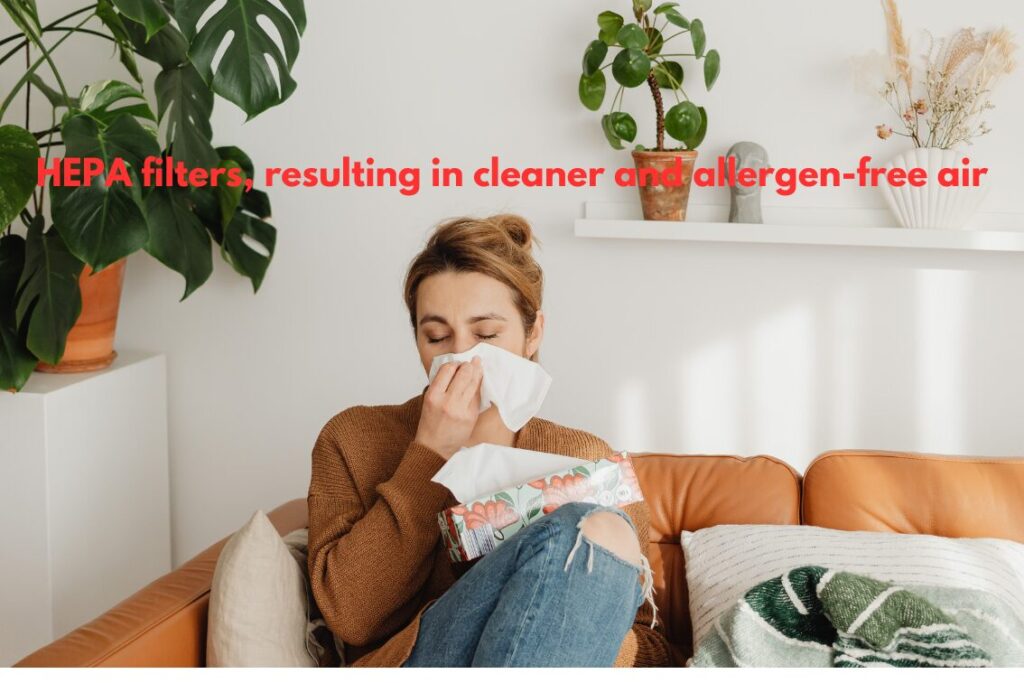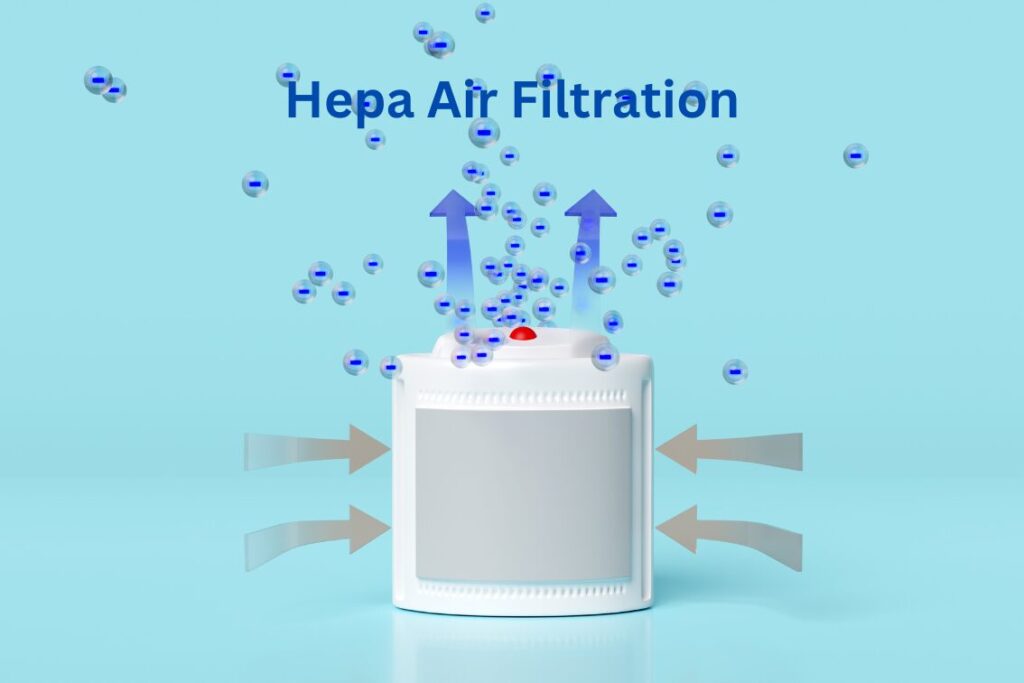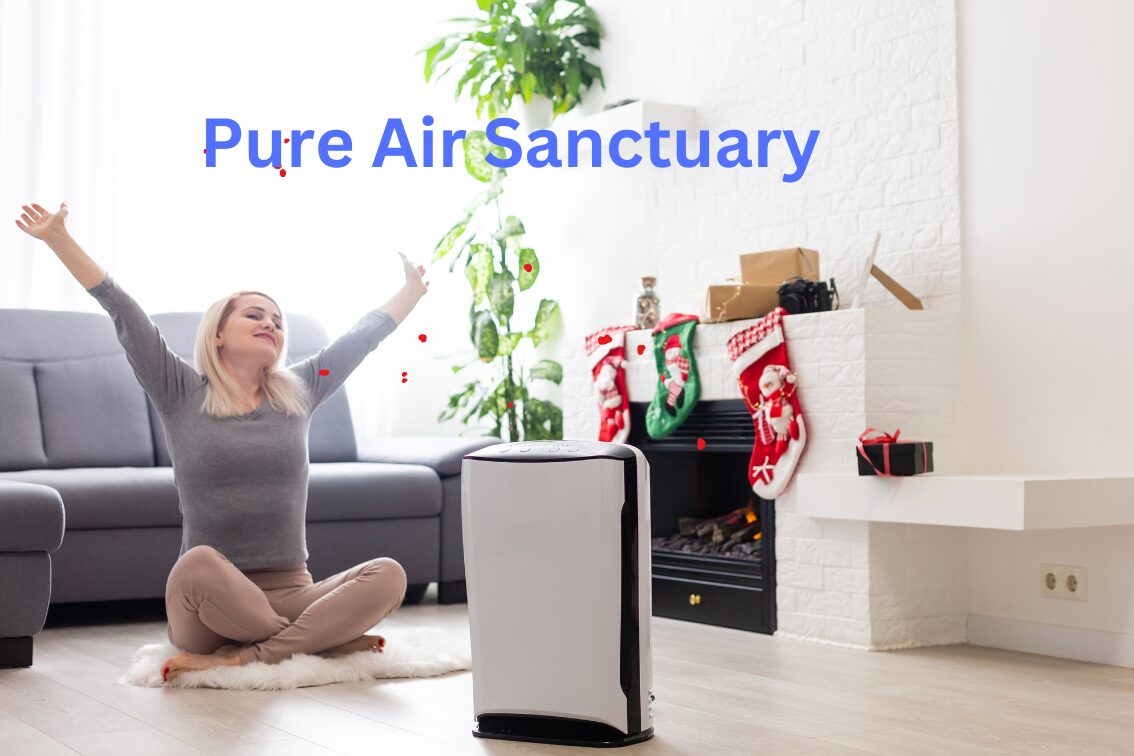*This post may contain affiliate links for which I earn commissions.*
HEPA filtration is a game-changer in the world of air purification. It offers an unmatched level of efficiency in capturing airborne particles, making it an essential component of modern air purifiers. In this comprehensive guide, we’ll delve into the intricacies of HEPA filtration, exploring its workings, benefits, limitations, and practical applications.
Introduction
HEPA filtration is not just another buzzword; it’s a cornerstone in the realm of air purification. Its ability to capture microscopic particles has revolutionized the way we address indoor air quality concerns. Whether you’re battling allergies or simply striving for cleaner air, understanding HEPA filtration is key to achieving your goals.
What is HEPA Filtration?
HEPA, or High Efficiency Particulate Air, filtration is a specialized air filtration system designed to capture particles as small as 0.3 microns with an efficiency of 99.97% or higher. Originally developed during World War II, HEPA filters have come a long way and are now widely used in various industries, including healthcare, aerospace, and residential air purification.
Definition of HEPA Filtration
HEPA filtration sets a high standard for air purification, ensuring that even the tiniest particles are effectively captured and removed from the air. Its dense mat of fibers traps a wide range of airborne pollutants, including dust, pollen, pet dander, mold spores, bacteria, and viruses.
History and Development
The journey of HEPA filters dates back to the 1940s when they were first developed to protect scientists from radioactive particles. Since then, HEPA filters have evolved into a fundamental tool for improving indoor air quality, finding applications in various industries worldwide.
Standards and Regulations
HEPA filters are subject to strict standards and regulations to ensure their performance and quality. Regulatory bodies such as the Department of Energy (DOE) and the Environmental Protection Agency (EPA) oversee standards for HEPA filters, ensuring compliance with industry guidelines.
How HEPA Filters Work
HEPA filters operate on the principle of mechanical filtration, utilizing a dense network of fibers to trap airborne particles as air passes through the filter media. This process involves multiple mechanisms, including inertial impaction, diffusion, and interception, to capture particles of varying sizes.
Structure and Composition
HEPA filters are composed of a dense mat of fibers arranged in a pleated configuration to maximize surface area and particle capture efficiency. These fibers are typically made of materials such as fiberglass or synthetic polymers and are enclosed within a sturdy frame to maintain their structural integrity.
Mechanism of Filtration
As air flows through the HEPA filter, particles encounter the fibers, where they are captured through inertial impaction, diffusion, or interception. Larger particles collide with the fibers and become trapped, while smaller particles are captured through diffusion and interception mechanisms.
Efficiency Ratings
HEPA filters are classified based on their efficiency in capturing particles of various sizes. The Minimum Efficiency Reporting Value (MERV) scale and HEPA classification (e.g., H10 to H14) provide consumers with valuable insights into the performance capabilities of HEPA filters.
Benefits of HEPA Filtration
HEPA filtration offers a wide range of benefits, making it a popular choice for air purification needs in various settings. Let’s explore some of the key benefits of HEPA filtration:

Removal of Allergens
One of the primary benefits of HEPA filtration is its ability to effectively remove allergens from indoor air. Pollen, dust mites, pet dander, and other common allergens are captured and trapped within the dense fibers of HEPA filters, resulting in cleaner and allergen-free air.
Capture of Microscopic Particles
HEPA filters excel at capturing microscopic particles, including bacteria, viruses, and ultrafine particles as small as 0.3 microns in size. This high level of filtration ensures that even the smallest airborne contaminants are effectively removed from the air, promoting a healthier indoor environment.
Improving Indoor Air Quality
By removing allergens, pollutants, and other airborne particles, HEPA filtration helps improve indoor air quality, reducing the risk of respiratory issues, allergies, and other health problems associated with poor air quality. Cleaner air can lead to improved overall health and well-being for occupants of homes, offices, and other indoor spaces.
Suitable for Allergy and Asthma Sufferers
HEPA filtration is particularly beneficial for individuals with allergies and asthma, as it can significantly reduce exposure to common allergens and asthma triggers present in indoor air. Using air purifiers equipped with HEPA filters can help allergy and asthma sufferers breathe easier and experience relief from symptoms such as sneezing, coughing, and wheezing.
Limitations of HEPA Filtration
While HEPA filtration is highly effective at capturing a wide range of airborne particles, it also has certain limitations that consumers should be aware of when considering air purification options.
Ineffectiveness Against Gaseous Pollutants
HEPA filters are designed to capture solid particles suspended in the air, such as dust, pollen, and pet dander. However, they are not effective at removing gaseous pollutants, including volatile organic compounds (VOCs), odors, and chemicals. For these types of pollutants, additional filtration methods, such as activated carbon filters, may be required to achieve comprehensive air purification.
Regular Maintenance Requirements
To maintain optimal performance, HEPA filters require regular maintenance, including periodic cleaning and replacement. Over time, the accumulation of captured particles can reduce airflow and efficiency, diminishing the filter’s effectiveness. It is essential to adhere to the manufacturer’s recommended maintenance schedule to ensure that the HEPA filter continues to operate at peak performance.
Size and Portability Constraints
HEPA filters are available in various sizes and configurations to suit different air purification needs. However, larger HEPA air purifiers may be bulky and less portable, limiting their placement options within indoor spaces. Additionally, smaller portable HEPA air purifiers may have limitations in terms of coverage area and airflow capacity, requiring multiple units for larger rooms or spaces.
Applications of HEPA Filtration
HEPA filtration finds diverse applications across various industries and settings, where clean air quality is paramount for health, safety, and environmental considerations. Let’s explore some of the key applications of HEPA filtration:
Residential Use
HEPA air purifiers are commonly used in residential settings to improve indoor air quality and create a healthier living environment. These air purifiers can effectively remove allergens, pollutants, and other airborne particles, providing relief for allergy and asthma sufferers, as well as promoting overall well-being for occupants.
Commercial and Industrial Settings
In commercial and industrial settings, HEPA filtration plays a crucial role in maintaining clean and safe working environments. Hospitals, laboratories, pharmaceutical manufacturing facilities, and cleanrooms utilize HEPA filters to remove airborne pathogens, contaminants, and particulate matter, ensuring compliance with stringent health and safety standards.
Specialized Applications
Beyond residential and commercial use, HEPA filtration is employed in specialized applications where clean air quality is essential. In the aerospace industry, HEPA filters are used in aircraft cabin air systems to provide passengers with clean and breathable air during flights. Similarly, in the pharmaceutical and nuclear industries, HEPA filters are utilized to maintain sterile conditions and prevent contamination in critical production processes.
Automotive Sector
HEPA filtration is increasingly being integrated into automotive air purification systems to enhance cabin air quality and protect occupants from outdoor pollutants and allergens. HEPA filters in vehicles can effectively remove particulate matter, pollen, and other airborne contaminants, providing a cleaner and healthier driving experience.
Environmental Remediation
HEPA filtration also plays a vital role in environmental remediation efforts, such as asbestos abatement, mold remediation, and hazardous waste cleanup. HEPA vacuums and air scrubbers equipped with HEPA filters are used to capture and contain hazardous particles, preventing their release into the environment and minimizing exposure risks for workers and the public.
Conclusion
In conclusion, HEPA filtration is a powerful tool for improving indoor air quality and creating healthier environments. Its ability to capture airborne particles makes it an indispensable component of air purification systems in residential, commercial, and industrial settings. By understanding the workings, benefits, limitations, and applications of HEPA filtration, individuals can make informed decisions to safeguard their health and well-being.

FAQs
- Are HEPA filters effective against viruses like COVID-19? HEPA filters can capture airborne viruses, including COVID-19, as long as the virus particles are carried by respiratory droplets. However, HEPA filters alone may not be sufficient to prevent the spread of the virus and should be used in conjunction with other preventive measures, such as wearing masks and practicing social distancing.
- Do HEPA filters produce ozone? No, HEPA filters do not produce ozone. They are designed to capture particles without emitting any harmful byproducts. However, some air purifiers may incorporate additional technologies, such as ionizers, which can produce ozone as a byproduct. It’s essential to choose air purifiers that are ozone-free if you have concerns about indoor air quality.
- How often should HEPA filters be replaced? The frequency of HEPA filter replacement depends on several factors, including the manufacturer’s recommendations, usage patterns, and indoor air quality conditions. In general, HEPA filters should be replaced every 6 to 12 months to maintain optimal performance. However, it’s essential to follow the specific guidelines provided by the manufacturer for your air purifier model.
- Can HEPA filters remove cigarette smoke odor? HEPA filters are effective at capturing solid particles, including smoke particles, but they may not entirely eliminate cigarette smoke odor. Additional filtration methods, such as activated carbon filters, are more effective at adsorbing odorous compounds and VOCs present in cigarette smoke. For optimal odor removal, consider using an air purifier with a combination of HEPA and activated carbon filters.
- Are there any health risks associated with HEPA filters? HEPA filters are generally considered safe and pose minimal health risks when used as intended. However, individuals with respiratory conditions or sensitivities may experience discomfort or irritation if exposed to high levels of airborne particles during filter replacement or maintenance. It’s essential to follow proper safety precautions and guidelines provided by the manufacturer when handling HEPA filters.

